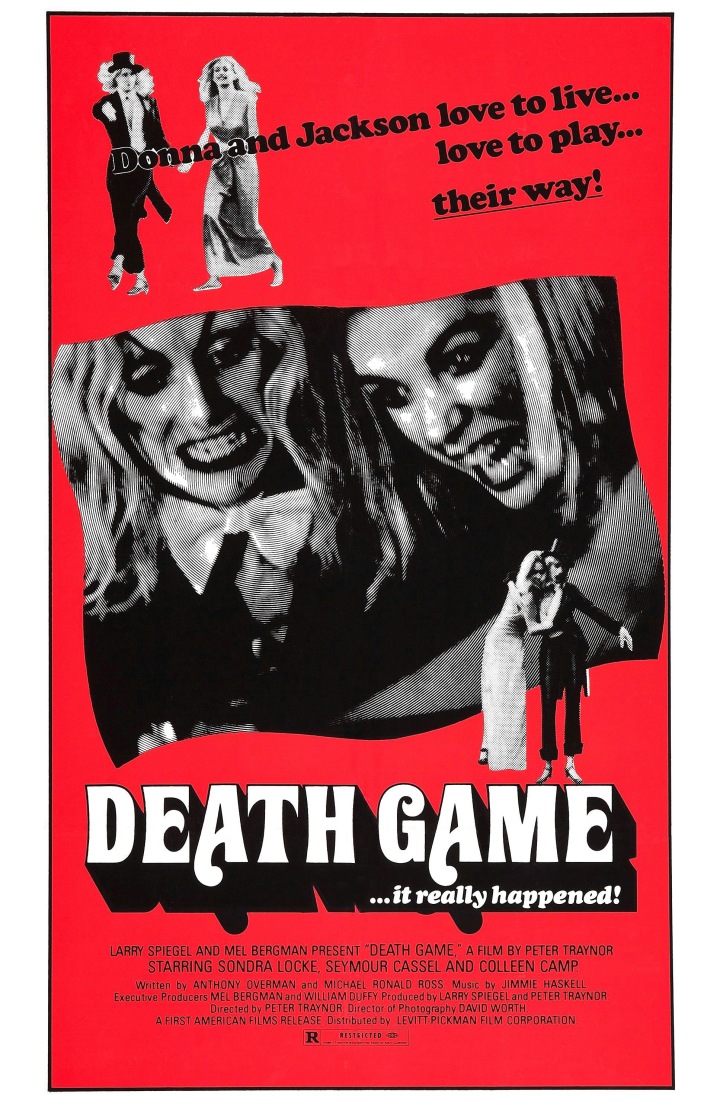
1977 EXPLOITATION TRIPLE FEATURE, PART TWO: RABID
If anyone from the future opens a 1977 time capsule stuffed with DVDs, the first impression they may reap is that everyone was having lotza sex this year. Sylvia Kristal (the most famous actress to essay the role) opens the year with Emmanuel 3. Laura Gemser (our Black Emanuel from ’75) takes over with Emanuel in America. Apparently native boys can’t get it up enough for her, so Laura branches out in Emanuel Around the World. She then plies her trade in the nunspolitation genre in Sister Emanuel, and finally takes on the cannibal movement with Emanuel and the Last Cannibals. After that, Laura gets some much needed R &R, and won’t return until 1980’s Emanuel: Queen Bitch.The 70s were definitely not political correct, as Chai Lee proves with Yellow Emanuel. It’s more of the same with a different skin hue. Lee shrugs off the racist title and slut shaming, declaring that her vagina is merely a muscle that needs exercising. Actually, it’s a tame affair.
Joey Heatherton took over the role of Xaviera Hollander for The Happy Hooker Goes To Washington. She’s a bitter fit than Lynn Redgrave was in 1975’s The Happy Hooker, and director William A. Levey was more at home with the trashy tales of the madame’s purportedly true exploits than Nicholas Sgarro had been two years earlier. Still, it’s dated soft-core titillation.
Adult film star Uschi Digard shows up for the “Catholic High School Girls in Trouble” sexploitation segment of John Landis’ anthology, Kentucky Fried Movie. Despite his one time commercial standing and the cults around a few of his films (1978’s Animal House, 1980’s The Blues Brothers, 1981’s An American Werewolf In London), Landis never made a good film and proved what a lousy filmmaker he was going to be in this, his second film. At the very least, we have to give the hack his due because he got through this without crippling or killing anyone.
Tan, buxom blonde Cheri Caffaro was a minor 70s exploitation sex symbol. She began her path to “fame” after winning a Brigitte Bardot lookalike contest and is best known for her Ginger McAllister trilogy: Ginger, The Abductors, and Girls Are For Loving, made between 1971 and 1973 and written and directed by her then husband Don Schain. Ginger was a softcore female James Bond for the drive-in circuit. All of these were trashy and fun (we hope to cover the entire trilogy at a later date). Caffaro had branched out(sort of) playing different characters in Schain’s A Place Called Today (social commentary exploitation, AKA dull sleaze) and Savage Sisters (1974, directed by Eddie Romero), which is a somewhat tame but fun women-in-prison exploitation. Caffaro’s last film role (before divorcing Schain and becoming a beekeeper!) is Too Hot to Handle, which reunited her with husband/Ginger director. Her character name has changed here to Samantha Fox, but it’s essentially a darker variation of Ginger McAllister with a bit of Ilsa thrown in. Caffaro has fun playing a lethal lady, and it’s contagious. It’s kinky and inventive, but hampered by trying to do more than the budget allowed.
Death Game (directed by Peter Traynor) is purportedly based on a true story and opens like an old dark house thriller with two women (Sondra Locke—best known as Clint Eastwood’s ex, and Coleen Camp—best known for her 70s cleavage) seeking refuge from the rain. Unfortunately, Seymour Cassel lets them in, and before you can say menage-a-trois, he discovers himself tormented by lesbian psychos from the pit. Despite all the destruction and mayhem, Seymour doesn’t solicit our sympathies. Low budget, rude, crude, and with some of the most amateurish editing ever committed to celluloid, this was almost universally panned at the time, but it is exploitation at its deranged purest, with waaaaaaay over-the-top performances. Overdosing on ham, you’ll think its a holiday of sorts.
Fight for Your Life (the only film directed by Robert Endelson) is ultra-violent blaxploitation, and one of the best in that sub-genre. With all the racial slurs being bandied about, this Straw Weisman script would be an almost impossible to produce today. It’s a variation of Last House on the Left and, to a lesser degree, 1955’s The Desperate Hours, with a gang of thugs breaking into the house of black minister and his family. A lot of torment follows, until the tables are turned. It’s been described as vile and repulsive and that’s absolutely spot on. It’s actually superior to Wes Craven’s groundbreaking film, but inexplicably less well known. If you prefer white racism swept under the rug, avoid this like the plague.
We come down several notches for The Uncanny (directed by Denis Héroux). Produced by Amicus veteran Milton Subotsky, it’s another stab at the anthology genre, and a tepid one at that. Peter Cushing is the author/host who tries to convince his skeptical publisher (Ray Milland) that cats are evil spirits intent on taking over the world, which segues into a trio of tales. The first (and-sort-of- best) vignette stars Joan Greenwood as a wealthy socialite who has revised her will, leaving everything to her cats. The maid (Susan Penhaligon) tries to steal the will and the felines get pissed, making for a gory comeuppance. The two remaining tales are forgettable, with Donald Pleasance giving one of his worst performances as faded actor Valentine Death, whom everyone calls V.D. Get it? Fortunately, the cat literally gets his tongue. Cushing and Milland are quite good and the direction is competent, but its failure is in the scripting by Michel Parry.
Continue reading “1977 EXPLOITATION TRIPLE FEATURE, PART TWO: RABID”







